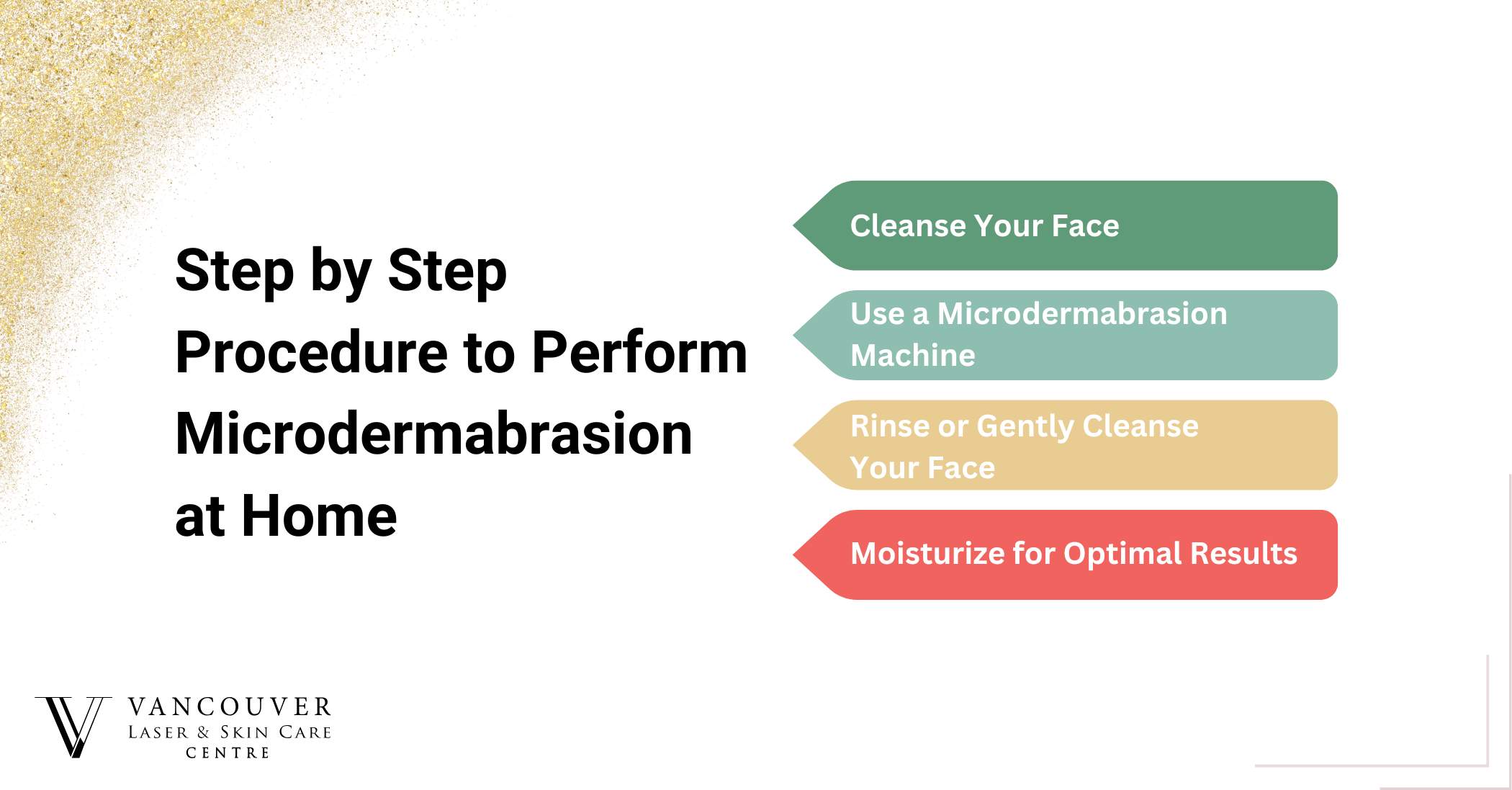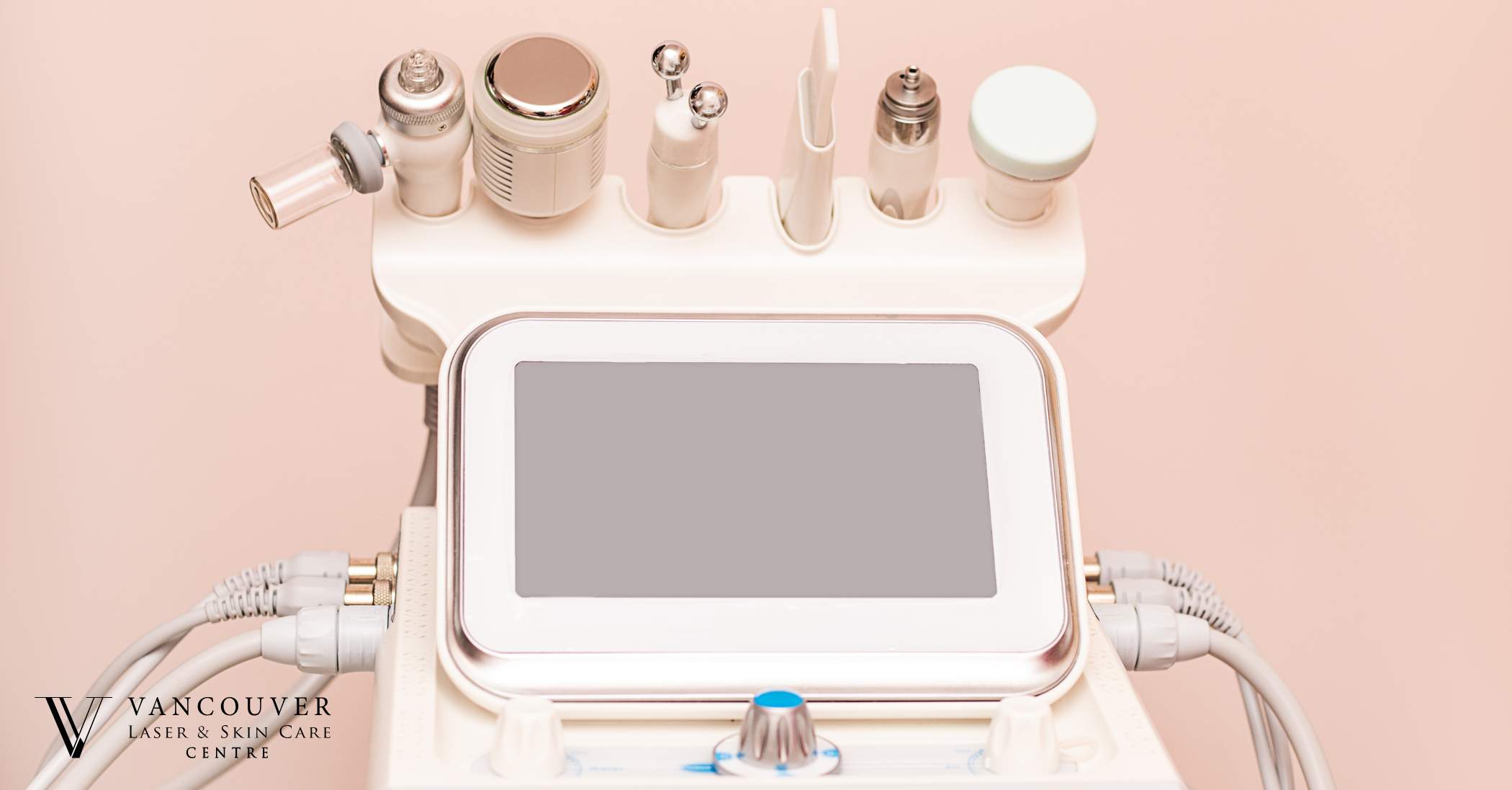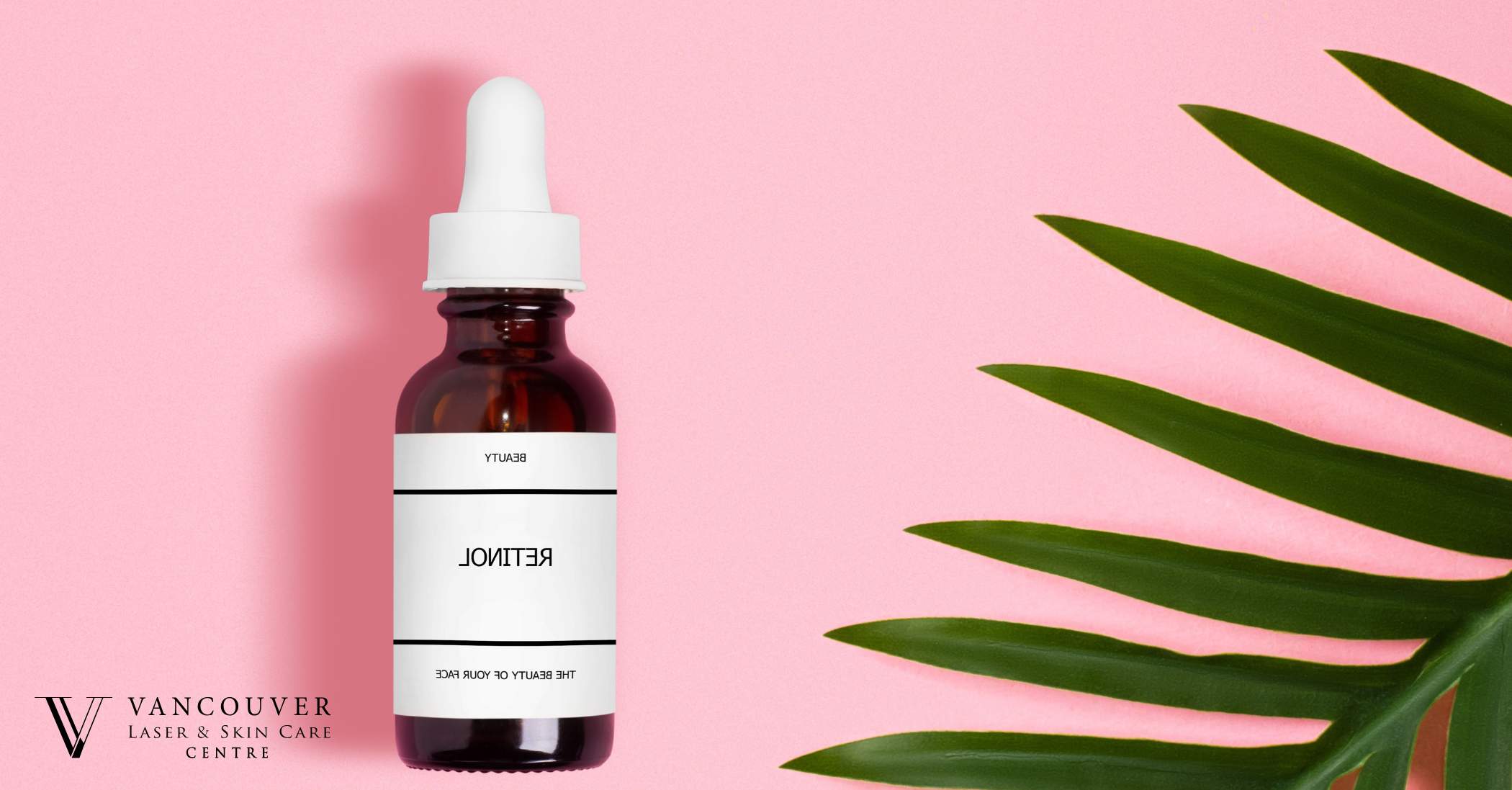Microdermabrasion is a nonsurgical skin exfoliation technique that removes dead cells, helping reveal smoother, brighter, and healthier-looking skin.
It’s commonly used to reduce fine lines, shrink pore size, and improve uneven skin texture. While professional microdermabrasion treatments offer impressive results, advancements in skincare tools now make similar treatments achievable at home.
At-home microdermabrasion requires some practice to master the techniques for optimal hydration, protection, and overall skin health.
In this article, we provide a detailed, step-by-step guide to performing microdermabrasion at home, along with aftercare tips to help you maximize the benefits of each treatment.
Step-by-Step Procedure to Perform Microdermabrasion at Home
Microdermabrasion is a popular skin treatment typically done at a spa or dermatologist’s office, but with the right tools and steps, you can perform it at home. Home microdermabrasion offers a convenient and cost-effective alternative, often providing results comparable to professional treatments.
Before starting, it’s important to understand the process for optimal results. Note that at-home microdermabrasion may not be suitable for everyone. If you have sensitive skin, are pregnant, or have certain health conditions, consult your doctor beforehand.

Cleanse Your Face
Before beginning your microdermabrasion treatment, wash your face with a gentle cleanser to clear away dirt, oil, and product residue. Pat your skin dry with a soft cotton towel to ensure it’s fully prepared for the microdermabrasion device.
Use a Microdermabrasion Machine
Using a microdermabrasion machine at home requires careful technique to avoid skin irritation. Start by turning on the device and setting it to a comfortable level. With one hand, gently pull your skin taut to create a smooth surface.
Move the device over your skin in slow, upward circles, covering all areas evenly. Apply light pressure, limiting yourself to one or two passes over each area to prevent over-exfoliation, which can cause redness or sensitivity. After treatment, hydrate your skin to soothe and protect it.
Rinse or Gently Cleanse Your Face
After treatment, rinse your face gently with water or micellar water to remove any remaining dead skin cells. Avoid using harsh cleansers, as your skin will be more sensitive and prone to irritation following microdermabrasion.
Moisturize for Optimal Results
Following your at-home microdermabrasion, your skin may appear slightly red or irritated. This redness should fade quickly. Calm your skin with a soothing serum and a thick moisturizer. If heading outdoors, use a moisturizer with SPF to protect your skin.
Get Professional Microdermabrasion at Vancouver Laser
If at-home microdermabrasion isn’t your preference, Vancouver Laser & Skin Care Centre offers expert treatments designed to rejuvenate your skin with ease and precision.
Using the advanced DermaSweep microdermabrasion system, this non-invasive procedure effectively addresses sun damage, pigmentation, and signs of aging—all without downtime. The gentle process exfoliates and polishes your skin, leaving it visibly smoother, brighter, and more radiant.
Whether you’re looking to enhance overall skin texture or treat specific concerns like keratosis pilaris, our highly trained specialists will tailor the treatment to your unique needs, ensuring exceptional results. Schedule your session today and discover the benefits of professional microdermabrasion!
Why Choose Vancouver Laser?
- Safe, non-invasive treatment suitable for all skin types
- No downtime with noticeable improvements
- Reduces uneven skin tone and enhances texture
- Brightens and revitalizes for a healthy glow
For best results, we recommend a series of three sessions spaced one month apart, followed by maintenance treatments as needed. After your session, simply apply sunscreen, and you’re ready to face the day with refreshed, radiant skin!
What should you do and avoid after the treatment?
After performing microdermabrasion at home, take steps to protect your skin and maximize results. Here are some essential tips:
Don’t Over-Exfoliate
Excessive exfoliation can harm your skin. Avoid using the microdermabrasion device too frequently or pressing too hard on one spot, as this can cause irritation, dryness, redness, and swelling. For optimal results, limit treatments to every two weeks for oily skin and once a month for normal skin.
Don’t Apply Too Much Pressure
Use a light touch with your at-home microdermabrasion kit to avoid damaging the skin. Pressing too hard can cause scratches, redness, and irritation, disrupting your skin’s natural barrier. For best results, let the device do the work and avoid pushing down on any area.

Choose the Right Device
Selecting the right microdermabrasion device is crucial for safe, effective results. Research options that suit your skin type, focusing on features like gentle exfoliation, varied applicator tips, and easy controls. Reading reviews and consulting dermatologists can help you make an informed choice.
Avoid Sun Exposure on Treatment Day
Plan your treatment for a time when you can remain indoors, away from direct sunlight, as exposure can increase skin sensitivity and irritation. Hydrate your skin frequently to maintain comfort and prevent dryness, especially if you’ve just exfoliated.
Skip Makeup
Avoid wearing makeup on the day of your treatment, as it can clog pores and interfere with healing. If makeup is necessary, choose high-quality mineral options over oil-based products. After the treatment day, you can resume regular makeup use, but always apply sunscreen first for added protection.
Never Skip Sunscreen
Limiting sun exposure before and after microdermabrasion is essential. Stay out of the sun and use sunscreen for at least a week before and after treatment. Post-microdermabrasion, your skin is more sensitive, increasing the risk of sunburn and damage. Use a broad-spectrum sunscreen with SPF 60 to nourish, soothe, and protect your skin.
Hydrate Your Skin
Moisturize whenever your skin feels dry, tight, or uncomfortable to keep it hydrated and promote healing. On the first day after treatment, you may need to reapply moisturizer frequently—even every hour—to maintain comfort. Pay attention to your skin’s needs and adjust as necessary.

Avoid Active Ingredients
Certain active ingredients should be avoided after microdermabrasion, including AHAs, BHAs, retinoids, benzoyl peroxide, and vitamin C. Steer clear of these for at least three days post-treatment. Additionally, avoid vitamin C, retinoids, or chemical exfoliants one week before and after microdermabrasion to prevent irritation. Given the strong exfoliation, it’s best to skip any other exfoliating ingredients.
Conclusion
Microdermabrasion is an excellent skincare solution for achieving smoother, brighter, and healthier-looking skin. With the right tool and proper technique, at-home microdermabrasion can help maintain radiant skin between professional treatments.
Consistency is key, but it’s important to avoid over-exfoliation. Space treatments 1–2 weeks apart, follow thorough aftercare, and prioritize hydration and sun protection. While at-home devices offer convenience, professional microdermabrasion provides deeper exfoliation and personalized care for more transformative results.For professional care, Vancouver Laser offers leading microdermabrasion services tailored to your skincare needs. Book a consultation today to experience the benefits of radiant, rejuvenated skin.
FAQs
1. Does home microdermabrasion really work?
Yes, when used correctly, home microdermabrasion can improve skin texture, reduce dullness, and brighten skin. Though not as strong as professional treatments, it’s effective for mild concerns like uneven skin tone.
2. Should skin be wet or dry for microdermabrasion?
Start with a clean, dry face. Use a gentle cleanser, remove all dirt and oil, and let your skin dry completely before treatment.
3. Can I use vitamin C serum after microdermabrasion?
Avoid vitamin C for 48 hours post-treatment, then gradually reintroduce it to support healing.
4. How often should I perform microdermabrasion at home?
For most skin types, performing at-home microdermabrasion every two weeks is ideal. If you have sensitive or dry skin, limit treatments to once a month to prevent irritation.
5. Can I combine microdermabrasion with other skincare treatments?
Yes, but timing matters. Avoid using strong exfoliants, retinoids, or chemical peels a week before and after microdermabrasion. Gentle hydrating serums and moisturizers are safe to use after treatment to nourish and calm your skin.
6. Can I use microdermabrasion if I have acne?
Microdermabrasion can help improve mild acne scars and skin texture, but it’s best to avoid using it on active, inflamed acne, as this may worsen irritation. Consult a dermatologist to see if it’s suitable for your skin type and acne condition.



